 |
| December 02, 2014 | Volume 10 Issue 45 |
Designfax weekly eMagazine
Archives
Partners
Manufacturing Center
Product Spotlight
Modern Applications News
Metalworking Ideas For
Today's Job Shops
Tooling and Production
Strategies for large
metalworking plants
Manufacturing history made: First object is 3D printed in space
History was made on November 24, 2014, at 9:28 pm GMT, when the first 3D printer built to operate in space successfully manufactured its first part on the International Space Station (ISS). This is the first time that hardware has been additively manufactured in space, as opposed to launching it from Earth.
"When the first human fashioned a tool from a rock, it couldn't have been conceived that one day we'd be replicating the same fundamental idea in space," said Aaron Kemmer, CEO of Made In Space, Inc. "We look at the operation of the 3D printer as a transformative moment, not just for space development, but for the capability of our species to live away from Earth."
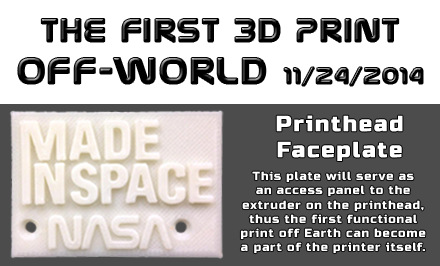
The first part made in space is a functional part of the printer itself -- a faceplate for its own extruder printhead.
"This 'first print' serves to demonstrate the potential of the technology to produce replacement parts on demand if a critical component fails in space," said Jason Dunn, Chief Technical Officer for Made In Space.
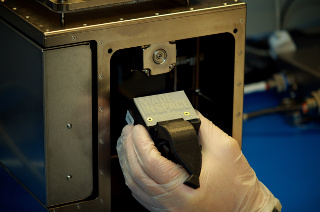
The "first print" in space is a part of the printer itself. The printhead faceplate holds internal wiring in place within the 3D printer's extruder.
For the entirety of the space program, tools and parts have been built on Earth and required a rocket to get to space. The presence of a 3D printer onboard the ISS will allow hardware designs to be made on Earth and then digitally beamed to the space station, where the physical object will be created in a matter of hours. "For the first time, it's no longer true that rockets are the only way to send hardware to space," said Mike Chen, Chief Strategy Officer for Made In Space.
The "3D Printing in Zero-Gravity Experiment" is a technology demonstration intended to learn about additive manufacturing processes in reduced gravity. The experiment is being jointly conducted by NASA's Marshall Space Flight Center (MSFC) and Made In Space, which designed and built the unique 3D printer for NASA through their Small Business Innovation Research (SBIR) program. The printer was delivered to the ISS in September 2014, and on November 17 astronauts installed it in the station's Microgravity Science Glovebox.
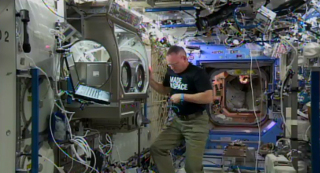
ISS Commander Barry "Butch" Wilmore installs the 3D printer in the Microgravity Science Glovebox.
"This project demonstrates the basic fundamentals of useful manufacturing in space. The results of this experiment will serve as a stepping stone for significant future capabilities that will allow for the reduction of spare parts and mass on a spacecraft, which will change exploration mission architectures for the better," said Mike Snyder, Director of R&D for Made In Space and Principal Investigator for this experiment. "Manufacturing components on demand will yield more efficient, more reliable, and less Earth-dependent space programs in the near future."
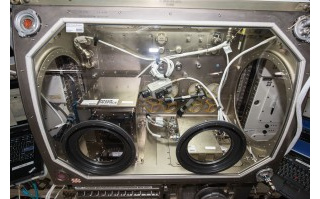
The 3D printer installed in the Microgravity Science Glovebox.
The initial phase of this science experiment will see a selection of test coupons, parts, and tools printed in order to validate design, methodology, and technology assumptions. Made In Space will print the same objects on their identical ground unit in order to provide a group of control prints. The ISS prints will be returned to Earth via a future return flight in order for the control prints and microgravity prints to be compared.
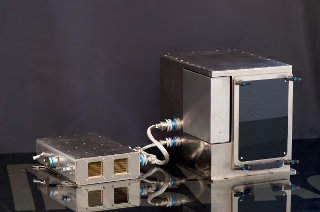
The Zero-Gravity 3D Printer was designed and built by Made In Space for NASA through a Small Business Innovation Research contract.
Once returned to Earth, the testing of the prints will provide data on a wide variety of factors, including tensile strength, torque, and flexibility. This information will allow the Made In Space team to make crucial adjustments to a second 3D printer, scheduled for delivery to the ISS in early 2015. This second printer will be an invaluable tool for astronauts and the government. It will also be available to commercial businesses and individuals on Earth to create on-demand hardware such as small satellites.
"The International Space Station has provided us with an ideal laboratory for demonstrating this game-changing technology that will not only benefit the station, but will also enable sustainable deep space missions," said Niki Werkheiser, program manager for the project at NASA's Marshall Space Flight Center in Huntsville, Alabama. "The project also serves as a model for how NASA can work with a small business to design, test, and build tools that can transform space exploration."
Following the initial printing phase, NASA and Made In Space will be conducting additional ongoing experiments to further test aspects of additive manufacturing onboard ISS.
"In 1957, Sputnik became the first man-made object in space and, 12 years later, that led to humans setting foot on the moon," said Kemmer. "Now, in 2014, we've taken another significant step forward -- we've started operating a machine that will lead us to continual manufacturing in space. Decades from now, people will look back to this event ... it will be seen as the moment when the paradigm of how we get hardware to space changed."
Source: Made in Space
Published December 2014
Rate this article
View our terms of use and privacy policy
